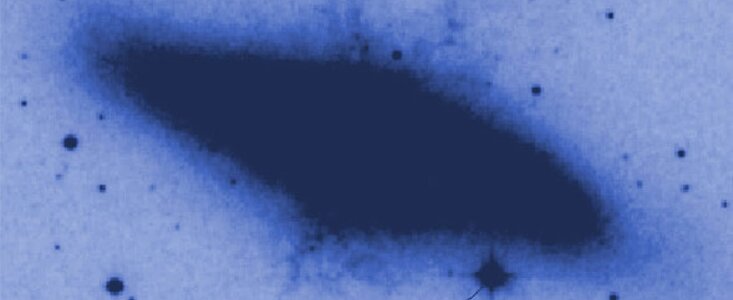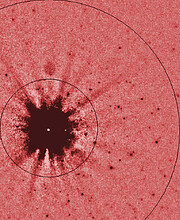Gemini Probes Red Stars in M82 Using Adaptive Optics
25 February 2004
A Canadian/Gemini team led by Tim Davidge (Herzberg Institute of Astrophysics) used the ALTAIR adaptive optics system with the Near Infrared Imager (NIRI) on the Frederick C. Gillett Gemini North Telescope to probe the red stellar content in the starburst galaxy M-82. The field studied is at a projected distance of 1 kiloparsec above the disk plane of the galaxy. This amorphous, nearly edge-on galaxy is the third brightest member of a nearby collection of galaxies called the M-81 group which is located about 12 million light-years from our Galaxy.
The interactions of galaxies in the M-81 group spur bursts of star formation in its members and M-82 appears to now be experiencing such a violent outburst. This activity in the disk of M-82 appears to drive a bipolar galactic wind that feeds gas to the outer regions of the galaxy. This work indicates that recent star formation in M-82 may not be restricted to the disk plane because of the possible detection of these bright asymptotic giant branch (AGB) stars away from the disk. Various mechanisms may explain star forming events away from the disk.
The ALTAIR/NIRI observations were made over a 22" x 22" field using the f/32 mode of NIRI delivering an image scale of 0.022" per pixel. The data have an angular resolution of 0.08" FWHM. Individual AGB and red giant branch (RGB) stars are resolved.
Based on the brightness of AGB stars and the brightness of the tip of the RGB, the authors conclude that the ALTAIR field they studied in M-82 is not dominated by an old population of stars. Instead, the brightness of the AGB stars suggest that they formed during intermediate epochs, possibly after the last major interaction with M-81 giving the stars in the ALTAIR field an age of about 1 billion years.




